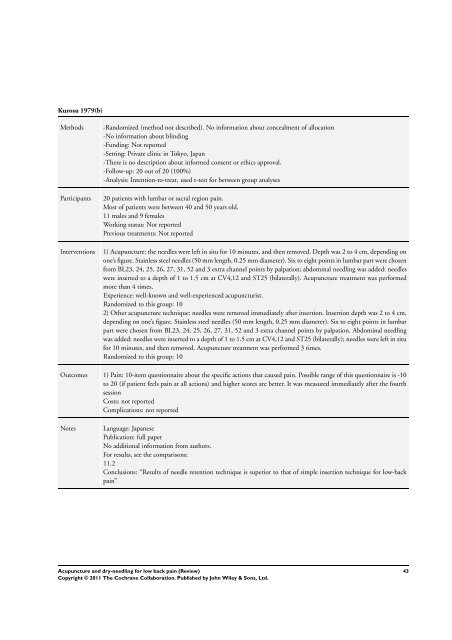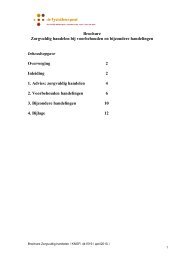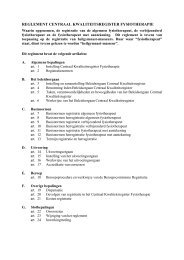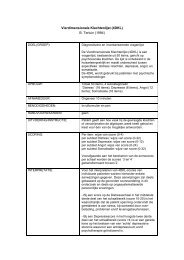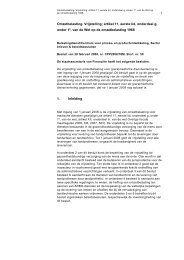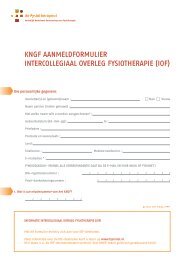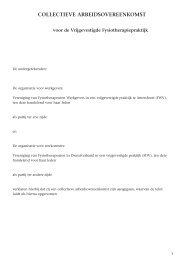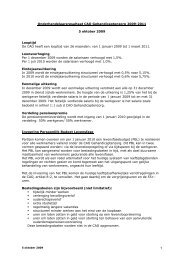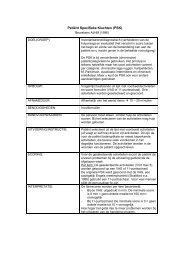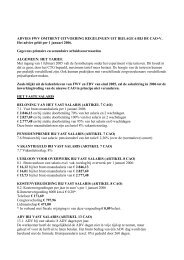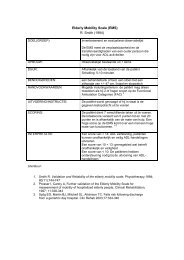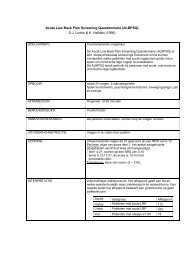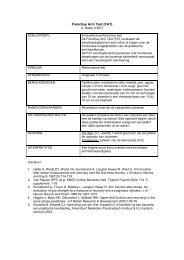Acupuncture and dry-needling for low back pain (Review)
Acupuncture and dry-needling for low back pain (Review)
Acupuncture and dry-needling for low back pain (Review)
Create successful ePaper yourself
Turn your PDF publications into a flip-book with our unique Google optimized e-Paper software.
Kurosu 1979(b)<br />
Methods<br />
Participants<br />
Interventions<br />
-R<strong>and</strong>omized (method not described). No in<strong>for</strong>mation about concealment of allocation<br />
-No in<strong>for</strong>mation about blinding<br />
-Funding: Not reported<br />
-Setting: Private clinic in Tokyo, Japan<br />
-There is no description about in<strong>for</strong>med consent or ethics approval.<br />
-Fol<strong>low</strong>-up: 20 out of 20 (100%)<br />
-Analysis: Intention-to-treat, used t-test <strong>for</strong> between group analyses<br />
20 patients with lumbar or sacral region <strong>pain</strong>.<br />
Most of patients were between 40 <strong>and</strong> 50 years old.<br />
11 males <strong>and</strong> 9 females<br />
Working status: Not reported<br />
Previous treatments: Not reported<br />
1) <strong>Acupuncture</strong>: the needles were left in situ <strong>for</strong> 10 minutes, <strong>and</strong> then removed. Depth was 2 to 4 cm, depending on<br />
one’s figure. Stainless steel needles (50 mm length, 0.25 mm diameter). Six to eight points in lumbar part were chosen<br />
from BL23, 24, 25, 26, 27, 31, 52 <strong>and</strong> 3 extra channel points by palpation; abdominal <strong>needling</strong> was added: needles<br />
were inserted to a depth of 1 to 1.5 cm at CV4,12 <strong>and</strong> ST25 (bilaterally). <strong>Acupuncture</strong> treatment was per<strong>for</strong>med<br />
more than 4 times.<br />
Experience: well-known <strong>and</strong> well-experienced acupuncturist.<br />
R<strong>and</strong>omized to this group: 10<br />
2) Other acupuncture technique: needles were removed immediately after insertion. Insertion depth was 2 to 4 cm,<br />
depending on one’s figure. Stainless steel needles (50 mm length, 0.25 mm diameter). Six to eight points in lumbar<br />
part were chosen from BL23, 24, 25, 26, 27, 31, 52 <strong>and</strong> 3 extra channel points by palpation. Abdominal <strong>needling</strong><br />
was added: needles were inserted to a depth of 1 to 1.5 cm at CV4,12 <strong>and</strong> ST25 (bilaterally); needles were left in situ<br />
<strong>for</strong> 10 minutes, <strong>and</strong> then removed. <strong>Acupuncture</strong> treatment was per<strong>for</strong>med 3 times.<br />
R<strong>and</strong>omized to this group: 10<br />
Outcomes 1) Pain: 10-item questionnaire about the specific actions that caused <strong>pain</strong>. Possible range of this questionnaire is -10<br />
to 20 (if patient feels <strong>pain</strong> at all actions) <strong>and</strong> higher scores are better. It was measured immediately after the fourth<br />
session<br />
Costs: not reported<br />
Complications: not reported<br />
Notes<br />
Language: Japanese<br />
Publication: full paper<br />
No additional in<strong>for</strong>mation from authors.<br />
For results, see the comparisons:<br />
11.2<br />
Conclusions: “Results of needle retention technique is superior to that of simple insertion technique <strong>for</strong> <strong>low</strong>-<strong>back</strong><br />
<strong>pain</strong>”<br />
<strong>Acupuncture</strong> <strong>and</strong> <strong>dry</strong>-<strong>needling</strong> <strong>for</strong> <strong>low</strong> <strong>back</strong> <strong>pain</strong> (<strong>Review</strong>)<br />
Copyright © 2011 The Cochrane Collaboration. Published by John Wiley & Sons, Ltd.<br />
43


